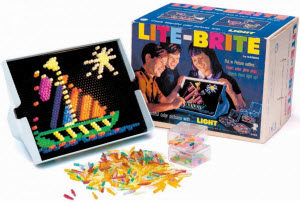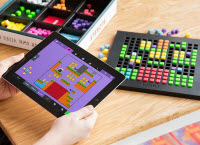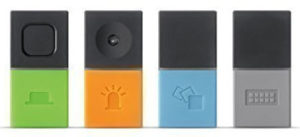With all the news and technology about the continual emergence of the internet of things, you’re likely becoming quite the smarty-pants. You can buy Smart Phones, Smart Cars, Smart Thermostats, Smart Watches, Smart TVs, etc. (heck, if you have a minute or two and we’d love to talk to you about Smart Shelves!) — but what if you could create your own Smart Retail Store or Pharmacy?
The really exciting thing is that the internet of things are getting to the point of being too simple to ignore.

Whereas once you needed a high tech programmer with a degree in computer science and years of experience in order to produce a gizmo or gadget like one of the devices I mentioned above, now any 4-year-old possessing experience equivalent to the old Lite-Brite toy can design, program, and produce a really cool video game all by themselves using a learning tool called Bloxels. (By the way: the old original Lite-Brite is selling for $199 on Amazon.com. A basic Bloxels set will run you a little under $50).

While building your own video game may not be on the top of your list, being able to program helpful Smart automation into the day-to-day running of your store ought to be. I discovered a rather cool tech tool (toy!) which may offer you some potential to explore in this area.
Which brings me to MESH
MESH is an app and companion physical devices (about the size of dominoes) that allow you to program very specific action that happen as a result of triggering these devices. At the moment there are seven different types of MESH Tags that provide a base for creating an action in response to a trigger:
- LED Tag
This Tag features a light that can be triggered by email notifications and the like, and activated to emit glow in a variety of colors. - Button Tag
Just what it says — a simple button, but you can trigger it to control a camera or sound chip or garage door opener or other remote switch. - Motion Tag
This Tag detects motion in a ranged area, and can then trigger actions like activating a video camera or turning on a light or sounding an alarm. - Move Tag
This Tag is a little different than the Motion Tag in that it is connect to a physical object and is triggered by the motion of that object. Something like attaching it to a toy car and then having it trigger a “vroom-vroom” sound effect when the car is rolled along the floor. - Brightness Tag
This Tag detects changes in ambient light, similar to the way some modern greeting cards trigger a sound chip when they are opened. - Temperature and Humidity Tag
This Tag allows users to monitor room temperature changes remotely, and can trigger alerts when a region gets too hot, cold, dry, or moist. - GPIO Tag
This special tag can be used with wireless electronic kits to power motors and complete electric circuits.
Why would I think this novelty item would be of interest to a readership of retail professionals?
Think about how you might apply these triggers and actions to specific areas of your store:
- The LED Tag could light-up every time a customer buys a specific item, has a total purchase over a certain dollar amount, or uses their customer rewards card.
- The Button Tag could be used to request customer assistance, illuminate a big “thanks for shopping” sign, play “happy birthday” for a special customer, or trigger an in-store announcement. Pharmacy patients could trigger alerts that they are waiting in line or in the drive-thru queue.
- Motion Tags could be placed on shelves to trigger promotional signage or audio messages, snap photos or capture video of anyone entering a restricted area, or count foot traffic in monitored aisles.Pharmacies could monitor aisle traffic with regard to certain medicines or high-theft products.
- Move Tags could be attached to Product Pushers and alert you to restock, they could be placed on large products on display outside to let you know they are being moved, or attach them to a cart corral to know when carts are stacking up. Pharmacies could trigger alerts to monitored OTC medicines being purchased in bulk.
- Brightness Tags could alert you to open refrigerated coolers or wine cellars or let you know when lights were left on in empty areas of the store. Pharmacies could install these near any light-sensitive pharmaceuticals.
- Temperature and Humidity Tags can track temperatures in the aforementioned coolers, as well as warehouses and around perishable goods. These could be useful for monitoring ideal storage conditions of pharmaceuticals.
- And the GPIO Tag… well there are all sorts of awesome things you could do with motorized devices. What about bring carts right up to a customer, or guiding restock carts to a specific aisle, opening shipping and receiving bay doors, or even raising and lowering banners and signage.
Applications are endless. You just need to think about the things in your store that require manual, individual attention, and then see if the task could be accomplished through one of these programmable sensor and triggering devices. And this is just the early version — think about where it goes from here and imagine the possibilities.
But first you need to experiment and get familiar with the tools. Invest in the technology (you can buy a MESH Tag start set on Amazon for less than the cost of that retro Lite-Brite!) and see if you can get it to turn the lights off in the break room every time the Motion Tag remains inactive for five minutes. Or use the LED Tag to glow green (the color of money!) every time an order comes in through your website.
If you watch the video I’ve shared on this page, you can see that the gizmos can be programmed on a touchscreen tablet with an app. If you don’t think you can do it yourself — go find a 4-year-old kid to help!

